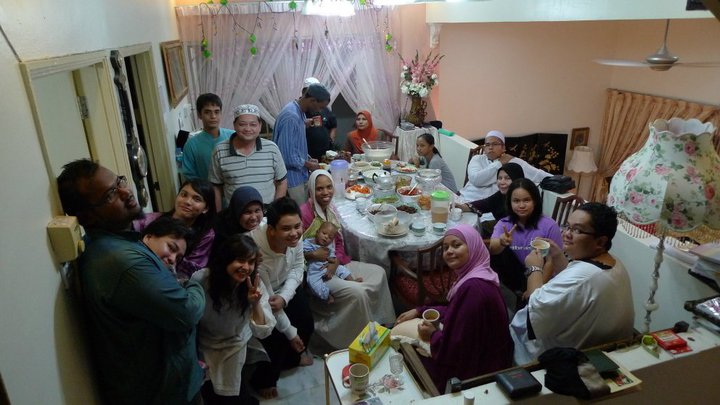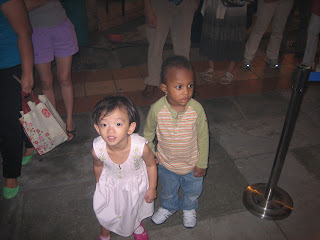“I was going to say that you favor Michelle Obama,” the Indian stranger said with warm cheer. She and her friend, who nodded in agreement, ate from curry dishes at a table we shared at the IKEA cafeteria. I smiled and laughed with them, accepting the compliment.
I had come to expect this kind of encounter. After telling the friendly women that I was from the United States, they were confused about how a person looking like me could be American without recent roots elsewhere. “Like Michelle Obama,” I explained to them. And as usual, my disarming analogy brought great cheer and laughter.
Honestly, I initially thought to use the “Like Michelle Obama” line as an educational tool for people who just didn’t seem to get the idea that Americans are not all white. It was also a way to have this conversation about my origins without giving a history lesson on U.S. slavery. Instead of referring to Kunta Kinte, I could speak of Michelle Obama.
But it wasn’t until I learned a few things from my real estate agent Patricia, a Chinese Malaysian, did I realize that “ Like Michelle Obama” not only educated others but also empowered me, in this case, by increasing my chances of renting a condo of choice.
Yes, the property owners in Malaysia do discriminate based on nationality. And of course, Americans are among the most preferred renters. (We have a reputation of keeping homes well maintained.) But of course, when Malaysians think of Americans, most think of white people. And, yes, Nigerians are undesirable renters (see earlier post). Due to all of the above, and to avoid any surprises, my agent told condo owners up front that we were black Americans. She often followed with an attempt to persuade them to consider us as renters.
One condo owner told Patricia, “I don’t want any Africans, even if they were migrants to the States first.” Patricia struggled to explain to her that our case was different, that not even our parents, grandparents, or great-grandparents migrated from Africa. “So, Jamillah, I told her what you told me. ‘She’s like Michelle Obama.’”
According to Patricia, the owner was overcome with laughter. Apparently she thought it quite “clever” of me to liken myself to the First Lady. I hope that her laughter was also an acknowledgement of her initial ignorance.
After sharing this story with my husband, he remarked, “This begs the question, ‘When do we become just American?’”
My thoughts raced to a memory of a second-generation Egyptian American student at Duke who posed this question to me in class after I kept referring to the children of Muslim immigrants as Arab American, Pakistani American, etc.
I now realize that I didn’t take his question to heart or validate the set of experiences that motivated it. Instead I defended my choice of terms based on my experiences and studies as a black Muslim woman graduate student.
Using the modifier African or black before American has been important to me for many reasons including the way in which it brings attention to the fact that race continues to matter in the United States. In particular, this practice resists notions of America as a colorblind society where racial and ethnic identifiers have no place. To promote the idea that we are “just American” is to conceal the race and class disparities persisting in our society.
In my book I highlight the ways in which immigrants of color downplay structural racism against African Americans and ascribe to ideologies such as
color blindness as part of the process of trying to be white. For this reason, I have looked critically at their appeals to be seen as “just American.”
However, the recurring question about origins—“Where are you really from?”—that I encounter abroad has made me better understand why the children of immigrants in the U.S. find it crucial to call themselves American without referring to their sub-ethnic identities. Because of the discrimination that they have encountered because they do not “look” American, they must assert their American identity, even if at times it means to momentarily drop other ethnic identifiers.
Intellectually I understood this and raised related points in my
book. But now I really get their perspective. Certainly I’ve encountered the question about origins before during visits to other places abroad, and even in the U.S. due to my hijab, but I took the question as a sign of ignorance that I could easily brush off suffering no harm or injury.
Now living in a foreign country, it is different because it is the first time I have been denied specific privileges based on others' perceptions of my national origins. In other words, I live in a context in which Americans are granted certain privileges but I am sometimes denied them simply because I don’t look like others’ image of an American and because my ancestors are from Africa.
And is not this what distinguishes racism from prejudice? Racism is the removal of rights and privileges based on people’s prejudices. Not until I experienced racism on account of national origins could I truly identify with my student’s question, “When do we become just American?”
Regarding the condo owner who discriminated against my family, the irony of her remark is that God has placed a family in the White House whose members are both the descendants of enslaved Africans and of a relatively recent African migrant to the United States.
The unimaginable hardship of our ancestors who survived the Middle Passage was not in vain. Their great-great-great grandchildren deserve the full rights and privileges of American citizenship. "Like Michelle Obama" is one way that I claim mine.


































